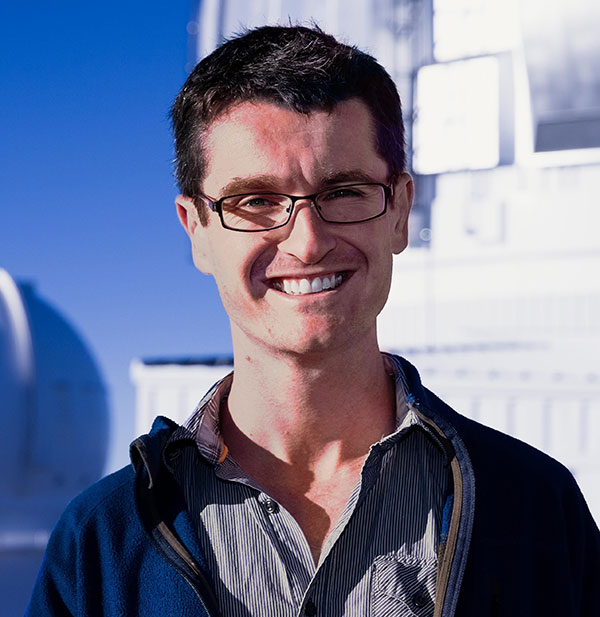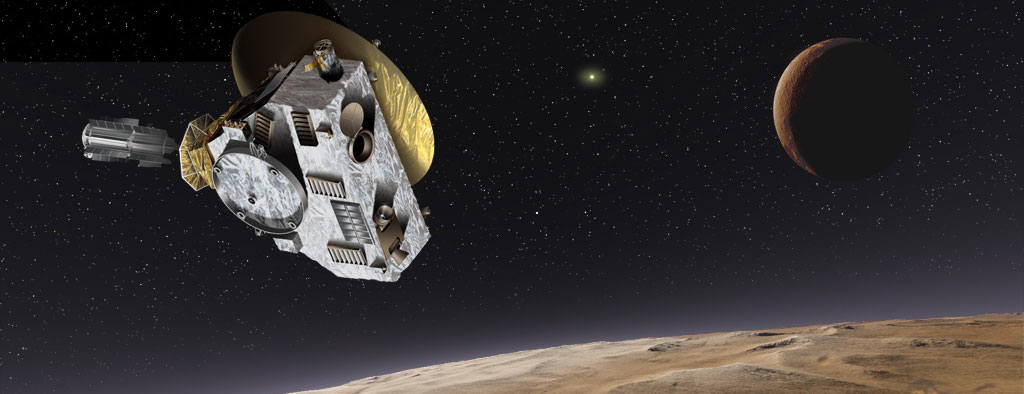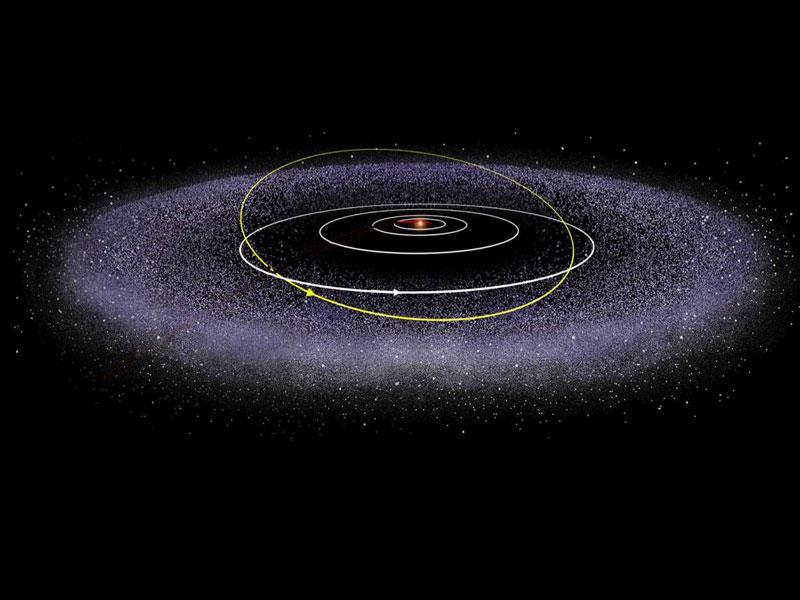New Horizons: Exploring the outer limits of our solar system
- Launch:
- Mission status: Active
NASA's New Horizons mission is exploring worlds at the outer edge of our solar system, including the dwarf planet Pluto and the mysterious Kuiper Belt, a vast region of icy objects in the outer solar system beyond Neptune.
Launched in and, after a nearly decade-long journey into deep space, New Horizons performed a six-month flyby exploration of Pluto and its moons in summer . It discovered four previously unknown moons of Pluto – Nix, Hydra, Styx and Kerberos – and provided new information about the surfaces of those bodies, their geology, interior makeup and atmospheres.
This unique, first-time contact with the outer reaches of our solar system will help us understand how it was formed, and how Pluto and its moons interact with the other planets and distant objects in our solar system.
Most of the planets in our solar system are either rocky (like Earth, Mars, Venus and Mercury) or gas giants (like Jupiter and Saturn). The two most distant planets, Uranus and Neptune, are classified as ice giants. But Pluto and its largest moon, Charon, are "ice dwarfs." This means they have solid surfaces but much of their mass is icy material. Astronomers believe that objects in the Kuiper Belt share this icy makeup.
By getting a close-up look at these strange worlds, we can explore how ice dwarf planets and Kuiper Belt objects (KBOs) have evolved over time. After a , flyby of a KBO known as Ultima Thule, New Horizons is heading further into the Kuiper Belt to examine other ancient, icy mini-worlds.
Objectives
The goals of the New Horizons mission are to:
- Understand the formation of the Plutonian system and the formation of the early solar system
- Study planets and other bodies that lie on the outer edges of our solar system and examine the following questions:
- What is Pluto's atmosphere made of, and how does it behave?
- What does Pluto's surface look like? Are there large geological structures?
- Does Charon have an atmosphere?
- How did the Kuiper Belt form, and what kinds of objects lie at its outer reaches?
Canada's role in the mission

Dr. Wesley Fraser, research scientist at the University of Victoria in British Columbia. (Credit: Gemini Observatory)
With funding from the Canadian Space Agency, Dr. Wesley Fraser, a research scientist at the University of Victoria, is leading a project to support the New Horizons mission by continuing the search for KBOs. Using ground-based observations, Dr. Wesley and his team are discovering and tracking previously unknown KBOs, and determining if their orbits take them near the New Horizons spacecraft. This project is focused on using and improving machine learning networks, a type of artificial intelligence computing, which researchers expect will help them find about 10 new, more distant KBOs for New Horizons to observe.

